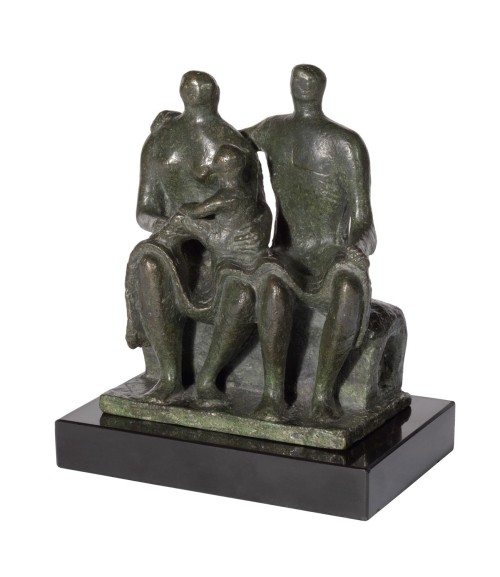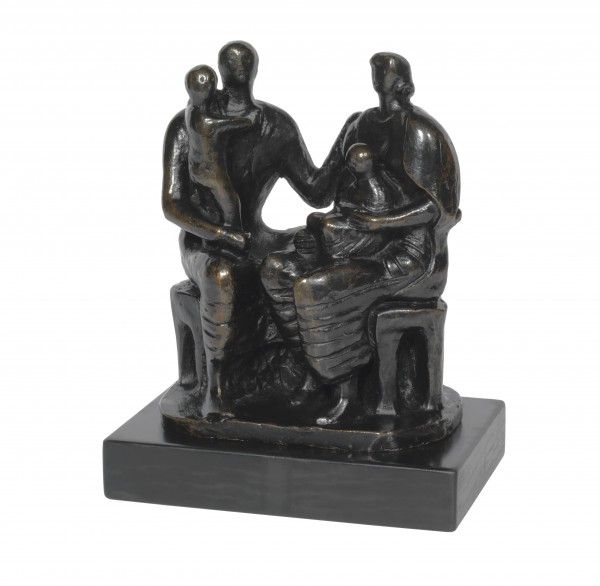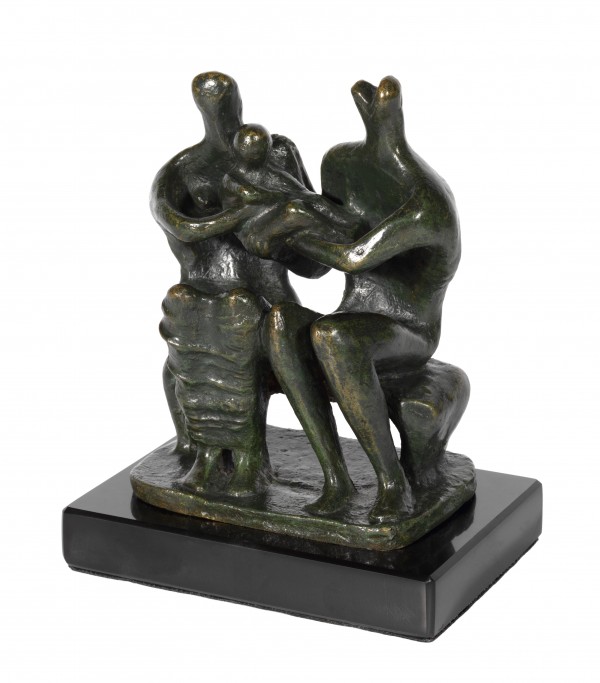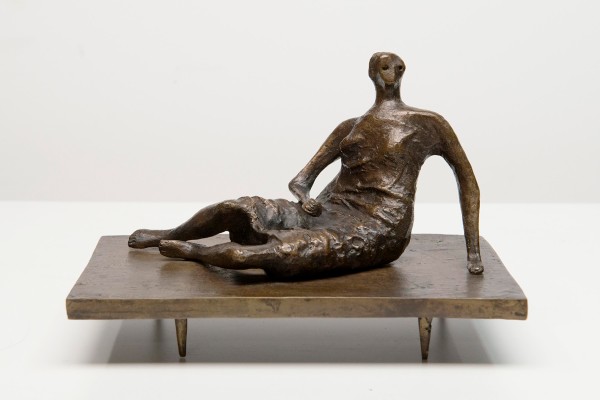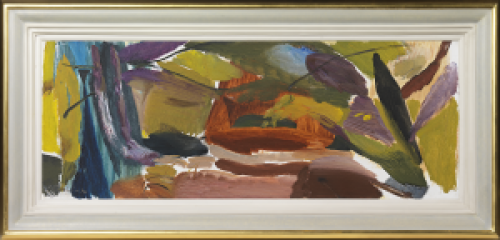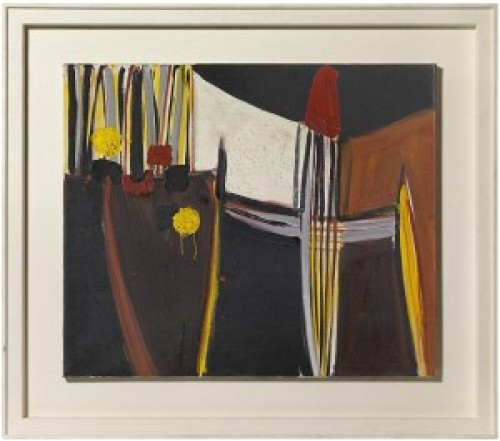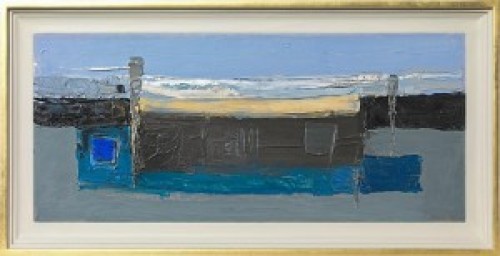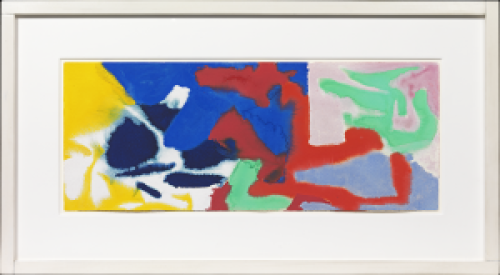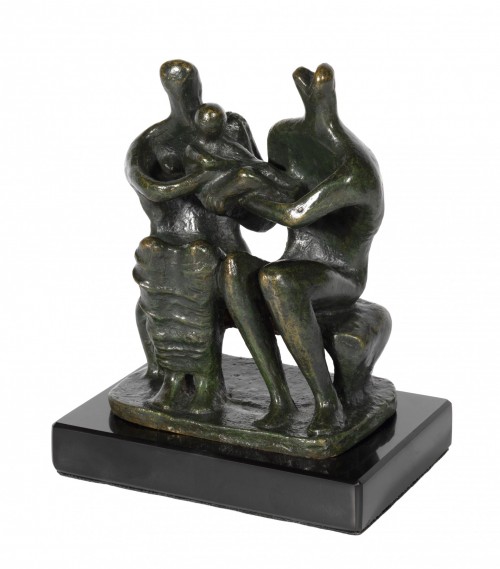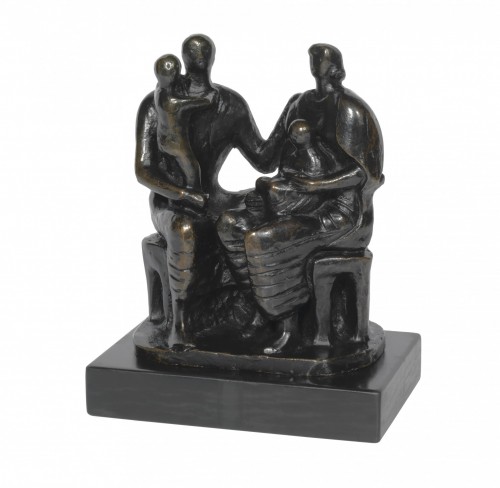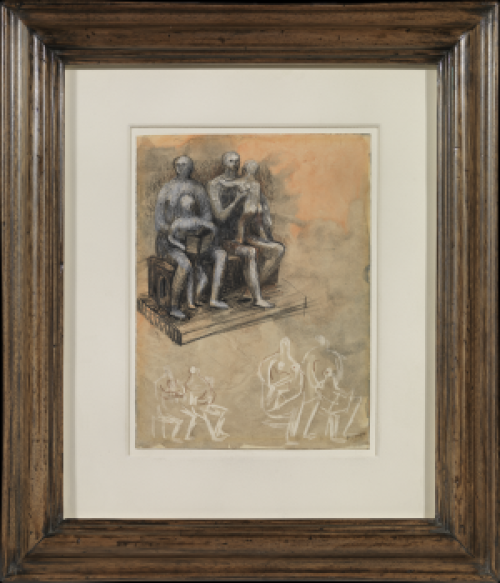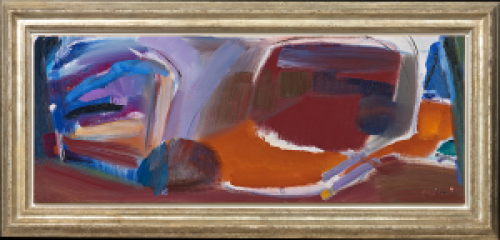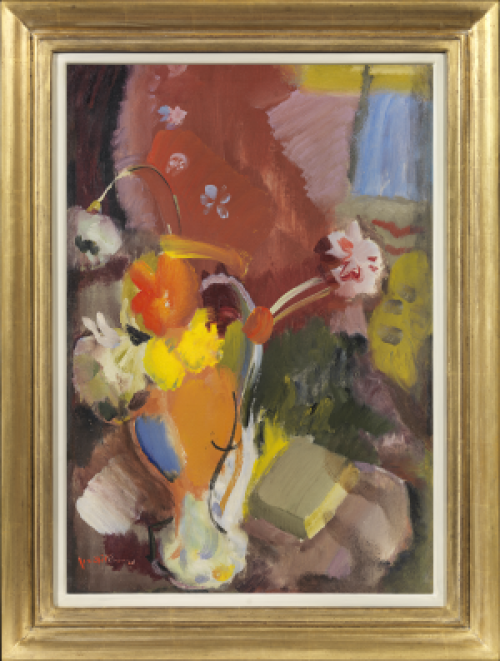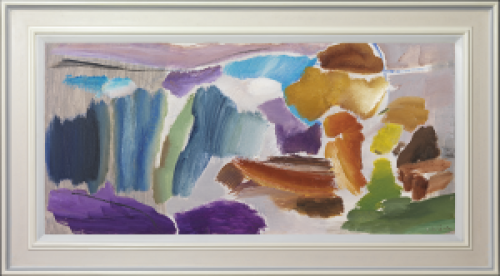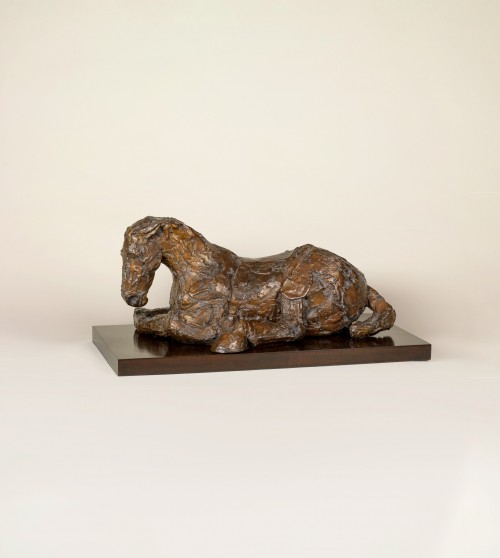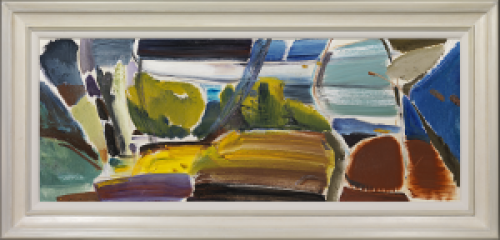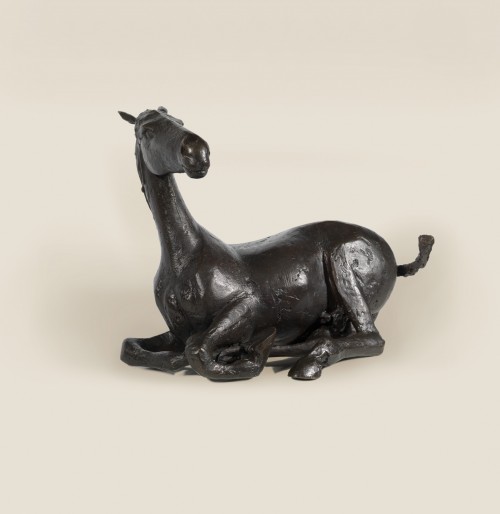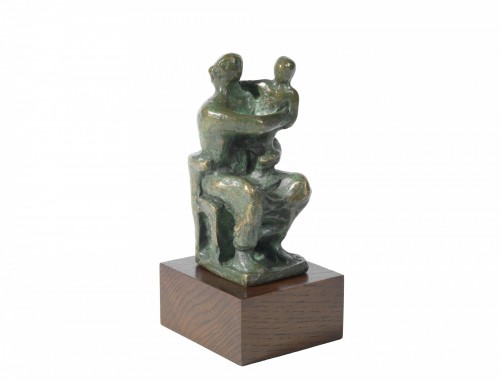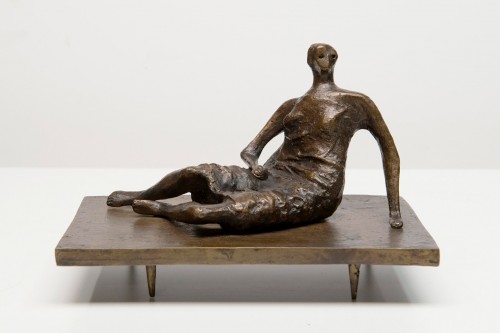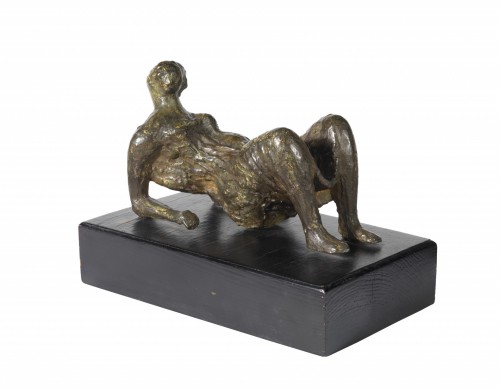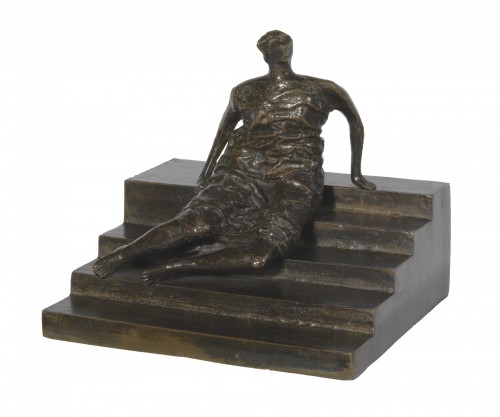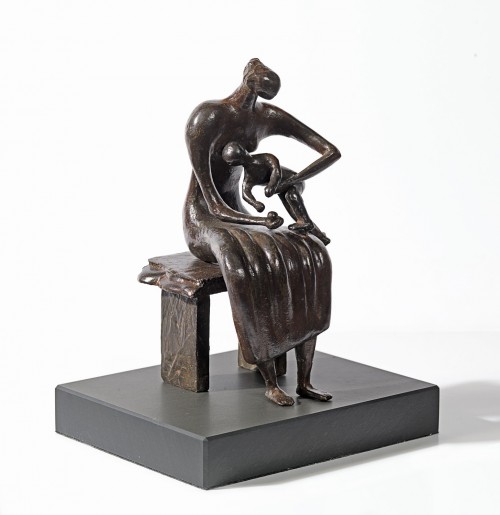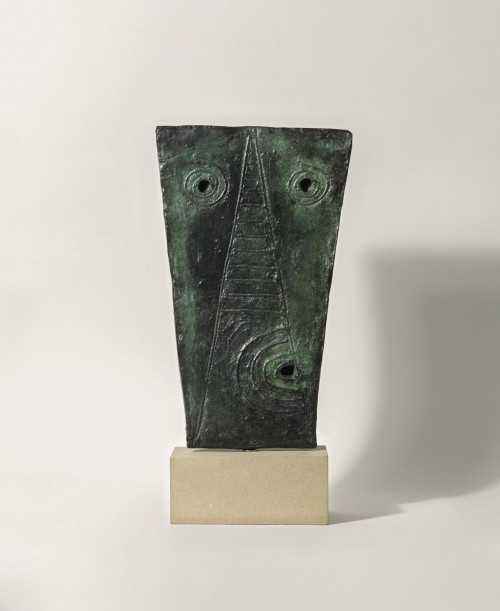HENRY MOORE OM CH
Castleford 1898 - 1986 Much Hadham
Ref: BR 45
Family group
Signed on the back of the bench: Moore
Bronze with a brown & green patina: 5 ¼ x 4 ½ x 2 ½ in /
13.3 x 11.4 x 6.4 cm
On a slate base: ¾ x 5 ¼ x 3 ½ in / 1.9 x 13.3 x 8.9 cm
Conceived in terracotta in 1944 and cast in 1945 by Charles Gaskin, The Art Bronze Foundry, London in an unnumbered edition of 7 plus one artist’s copy
LH 227
Provenance:
Waddington Galleries, London;
Private collection, Europe, circa 1995, acquired from the above
Literature:
Herbert Read, Henry Moore Sculpture and Drawings, Lund Humphries and Company, London, 1949, no. 106e (another cast illus.)
Will Grohmann, The Art of Henry Moore, Thames and Hudson, London, 1960, p.8, no. 120 (another cast illus.)
Alan Bowness (ed.), Henry Moore, Sculpture and Drawings: Sculpture 1921–48, London, 1965, vol. I, p.143, no. 227 (another cast illus.)
Robert Melville, Henry Moore Sculpture and Drawings 1921–1969, Thames and Hudson, London, 1970, no. 316 (stone version illus.)
David Sylvester (ed.), Henry Moore Complete Sculpture 1921–48, Vol. I, Lund Humphries, London, 1990, p.14, no. 227, p.143 (terracotta illus.)
This small-scale Family group was cast in bronze from a terracotta model Moore made for a public commission for Village College Impington, suggested by the architect Walter Gropius in the late 1930s. The school aimed to employ the progressive educational ideas of Henry Morris, the Director for Education in Cambridgeshire, in particular that rural schools should provide facilities for parents as well as children, providing space for films, plays and lectures, so as to become the social centre of the community. This notion of family unity was to be realised in Moore’s sculpture.[1] Postponed by the advent of War, Moore returned to the idea in 1944 when the commission was temporarily revived and began making ‘drawings in note book form of family groups. From these notebook drawings I made a number small of maquettes…Some of the maquettes were ideas for bronze, but most of them were for stone because for the Impington school I felt stone would be the suitable material.’[2] Moore developed a number of versions on the theme between the autumn of 1944 and the spring of 1945, one of which is in the Tate collection.
Moore was inspired by the family group from the early 1940s, though it has been customary to attribute his interest in the subject to the longed-for birth of his only child, Mary, in 1946. Following the end of the Second World War, Moore’s Family group sculptures took on even greater significance as symbols of familial strength, protection and nurturing. The three member family naturally evolved from the artist’s Mother and child theme, which had appealed to Moore because of its significance throughout the history of art, for the emotive relationship it represented and for its potential for formal development between figures.
In 1954–5, the artist carved an enlarged version of the present work in Hadene stone measuring 64 inches, which became known as the Harlow Family Group.
HENRY MOORE OM, CH
Castleford, Yorkshire 1898 - 1986 Much Hadham, Herts
The seventh child of Raymond Spencer and Mary Moore, Henry was born in Castleford, Yorkshire in 1898. His paternal great-grandfather was of Irish origin, but his father and grandfather were born in Yorkshire where, for two or three generations, they worked the land or went down the mines. At the age of twelve Moore obtained a grant to study at the Grammar School in Castleford where he was inspired by his art teacher to pursue a career in the arts. In 1916 he began to teach, but by February 1917 he had joined the army and left to fight in France.
After being wounded in action in November 1917 at the battle of Cambrai, Moore was excused from active service. He returned to England, where he became a physical education instructor in the army. At the end of the war, Moore received a veteran’s grant to study at Leeds School of Art and in 1921 he joined a course at the Royal College of Art in London. A further grant enabled him to travel extensively from 1925, visiting Rome, Florence, Venice, Ravenna and Paris, where he met Picasso, Giacometti, Ernst, Eluard and Breton among others. On returning from his travels Moore was appointed Professor of Sculpture at the Royal College of Art where he worked two days a week until 1931, as well as teaching at the Chelsea School of Art until 1939. He was appointed an Official War Artist during the Second World War from 1940–1942 for which he made a series of drawings of people sheltering in the London Underground, as well as studies of miners at the coal face. In these pictures he frequently used watercolour over wax crayon. After the war Moore enjoyed a great deal of success, with his works receiving critical acclaim all around the world. He executed many major commissions for museums, public institutions, private collectors and municipal buildings and as a result he became one of the most famous British artists of the twentieth century.
At the beginning of the 1970s Moore created a foundation, the aim of which was to promote public awareness of sculpture and to protect his own work for the future. Located in his home village of Much Hadham, Hertfordshire, the foundation houses a library, archives and a collection of drawings, prints, maquettes and sculptures by the artist. Heavily influenced by the work of Michelangelo, Moore created monumental works in marble, stone and bronze and was enthralled by the theme of the family, and in particular the mother and child. His unique oeuvre draws inspiration from prehistoric, archaic, Egyptian, African, Mexican and Roman sculpture. Throughout his career he was noted for his output of graphic art – drawings, watercolours, etchings and lithographs which were not necessarily related to individual sculptures.
[1] A detailed account of the commission is recalled by the artist in Philip James, Henry Moore on Sculpture, MacDonald, London, 1966, pp.224–229.
[2] The artist cited in A Wilkinson, (ed.), Henry Moore: Writings and Conversations, Lund Humphries, Aldershot, 2002, p.273.

